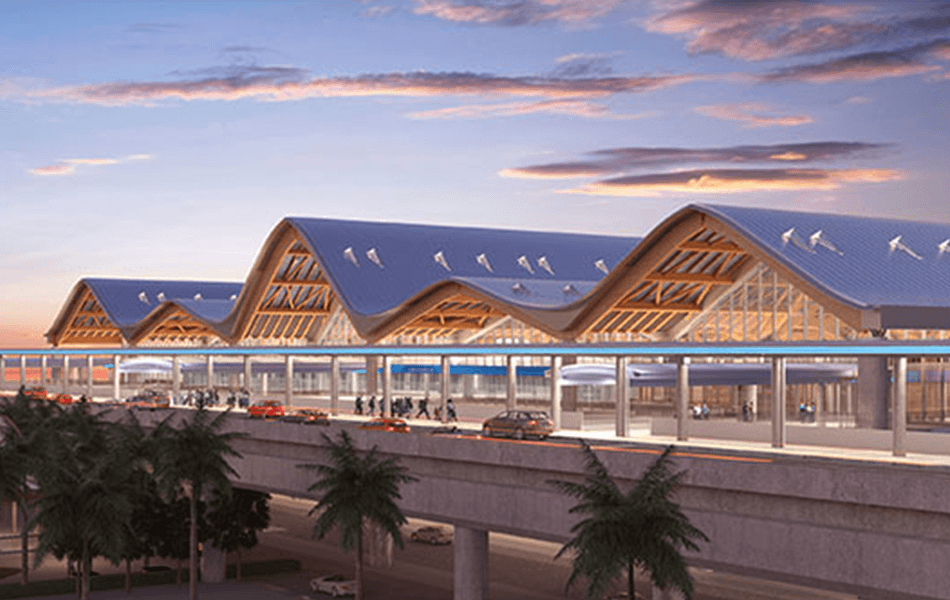A home is where you will always feel secure and comfortable. You will choose to live in a place where you would feel cozy, peaceful, and has a positive milieu. In the Philippines, Pampanga is truly one of the best places to be. That is why there are so many reasons why you should invest in Pampanga. With the popular Filipino delicacies, arts, crafts, and tourist attractions, there is no doubt that Pampanga would surely make living joyful and satisfactory.
Pampanga has traditionally been a significant province for the nation. It was one of the richest provinces in the Philippines under the Spanish rule and served as a commerce hub for Manila and the surrounding area. Agriculture, fishing, forestry, and skilled labor were all in great supply in the Kapampangan region. Additionally, it was crucial to the Americans’ occupation and even functioned as a crucial operational base during the Second World War. Further, Pampanga is a province with a long history and vibrant culture, and continues to enjoy prominence as the birthplace of some of the Philippines’ most notable citizens. The province has contributed significantly to the identity of the Philippines, from presidents like Diosdado Macapagal and his daughter, Gloria Macapagal-Arroyo, to artists like celebrated filmmaker Brillante Mendoza and renowned singer Lea Salonga. Despite all of this, it is obvious that Pampanga can still do much more if it receives more attention and develops as a hub of economic activity.
Advantages of Living in Pampanga
1. Accessible Transport System
Pampanga, sometimes known as Pampag, is a province in the Philippines’ Central Luzon area. Pampanga, which is located on the northern side of Manila Bay, is bordered to the north by Tarlac, to the northeast by Nueva Ecija, to the east by Bulacan, to the central-south by Manila Bay, to the southwest by Bataan, and to the west by Zambales. The City of San Fernando is the nation’s capital. Despite being physically located within Pampanga, Angeles City is considered a first-class, highly urbanized city that is governed separately from the province.
Like Metro Manila, more developments of another kind are happening in wherein there are continuous infrastructure programs gives more reasons why you should invest in Pampanga. Billions of pesos from the public and private sectors are surging into the Clark Freeport area, from the construction of additional property estates to the various attractions, recreational venues, and local businesses that have popped up in anticipation of the Clark International Airport’s expansion. With this, residential communities like Pampanga condos would truly be a satisfying means for you to stay.
The Clark International Airport New Terminal Building had begun construction in the fourth quarter of 2017 and is slated for completion in 2020. The goal of the project, under the government’s infrastructure plan, is to provide a new mass transport system to help solve congestion in the country’s main urban centers and create interconnectivity in the whole archipelago. Other infrastructure projects in the area include the Manila-Clark Railway and the Subic-Clark Railway. There is really a great benefit and advantage of living in Pampanga.
New Clark City, a planned community in Capas, Tarlac, is rising up to be a national cultural beacon and could become a key destination in the ASEAN region, as the main host of the 2019 Southeast Asian Games. Also one of the big ticket projects of the Build, Build, Build program, New Clark City upon completion will be the country’s first smart, green and disaster-resilient city. It will feature a mixed-use area consisting of residential, commercial, agro-industrial, educational institutions, and information technology developments.
Key infrastructure developments in Clark are boosting Central Luzon’s gross domestic product (GDP). According to the Bases Conversion and Development Authority (BCDA), the government body in charge of the area’s development, Central Luzon’s economic output grew to 9.3% in 2017, almost 3% higher than the country’s GDP of 6.7% for the same year.
2. Reliable Water and Power Supply
In Pampanga, there is a reliable supply of power and water, which improves the quality of life, particularly in Pampanga homes and Pampanga condominiums. The government ensures that there is a distribution of power and water supply as a point source system, community faucet system, and individual connections. In relation to this, it is undeniable that there is an adequate supply of water for users given the growing population.
Most towns receive electricity from Pampanga Electric Cooperative’s (PELCO) distribution facilities, which include PELCO I, II, and III. In addition, San Fernando Electric Company provides electricity to the City of San Fernando (SFELAPCO). Moreover, Angeles Electric Corporation provides electricity to Angeles City and a few isolated areas of Mabalacat, Villa de Bacolor, and Porac (AEC). Furthermore, Manila Electric Company also provides electricity to some areas of Candaba and Macabebe (MERALCO). Pampanga continues to ensure the welfare of the residents.
3. Transportation
Land transportation to Pampanga is provided by highways and buses. There are connections between Metro Manila and the surrounding provinces by bus routes from Manila to Nueva Ecija, Bulacan, Bataan, , Tarlac, Pampanga, Dagupan, and Zambales. The North Luzon Expressway (NLEX) extends 84 kilometers from Balintawak in Metro Manila’s Quezon City to Santa Ines in Mabalacat. It traverses through a number of towns and cities before ending on Santa Ines in Mabalacat, including Santo Tomas, Apalit, San Simon, San Fernando, Mexico, and Angeles.
The Subic-Clark-Tarlac Expressway (SCTEx), which has four lanes is considered as the longest toll expressway in the Philippines. Its southernmost point is at the Zambales province’s Subic Bay Freeport Zone, and it travels via the Clark Freeport Zone through the Clark North and Clark South interchanges. The Mabalacat Interchange connects the highway to the North Luzon Expressway. Tarlac City’s Central Techno Park serves as its northernmost point.
National highways and expressways both connect to the province. Pampanga is served by the MacArthur Highway and Jose Abad Santos Avenue, two significant national thoroughfares. National secondary, tertiary, and provincial roads support the network of highways. With this, it is clear that Pampanga’s transportation system is useful and convenient. With these, it is evident that the transportation aspect of Pampanga is practical and convenient.
4. Numerous Opportunities
The economy is greatly impacted by agriculture, which also creates numerous prospects for community expansion and prosperity. San Fernando City, among other places, is well renowned for its production of sugar and rice.
This province has 20 municipalities that are divided into four districts. Apart from the fact that it covers the 218,100 hectares in central Luzon, the main industries in Pampanga are agriculture and fisheries, which produce a variety of goods, including tilapia, and corn. Being the culinary capital, you would surely enjoy the food and get to be fascinated with Pampanga’s different restaurants. It is also a place of business hubs since it is known for wood carving, handmade goods, and furniture manufacturing are some additional well-liked industries.
A hub for the production of hand-crafted parols is also established in the city every year during the Christmas season. Due to their intricate designs and the appearance of dancing lights, which highlights the rich colors of the lanterns, these lanterns stand out from the standard.
Imagine spending the most wonderful time possible with your loved ones, laughing and loving each other as stunning, unique, and vibrant lights and decorations surround you. Pampanga condominium is truly accessible and will assist you in having the most creative holiday celebrations. Compared to other places in the Philippines the quality of living in Pampanga, especially the property values are incredibly satisfying.
On the other hand, Business chambers in Central Luzon attribute the progress and development to high-impact properties including New Clark City, the Clark International Airport, the Manila-Clark Railway, and the Subic-Clark Railway, according to the Bases Conversion and Development Authority (BCDA).
One of the largest decisions a person takes in their lifetime is without a doubt investing in their own home and lot. One drawback is the price. It may be comparable to the value of an annual salary. The future will also be significantly impacted. Additionally, daily living will adapt. Again, though, in the ideal environment, your property would create the perfect equilibrium, enhancing the beauty and manageability of every day as it passed.
5. Tourist spots in Pampanga
Pampanga is known for its extensive contributions to history, tradition, and even exceptional culinary inventions, earning it the title “Culinary Capital of the Philippines.” Pampanga is a foodie’s paradise, with delicacies ranging from sisig, the famous sizzling pig dish, to family favorites like pangat na ulang (sour soup with fresh water prawns).
On top of delicious foods and recipes, wood carving, handmade goods, and furniture manufacturing are some additional well-liked industries. In the Philippines, handcrafted illuminated lanterns, popularly known as “Parol,” are added.
6. Climate
Rainy and dry seasons are considered as the two distinct climates in the province of Pampanga. The rest of the year is the dry season, with the rainy or wet season often starting in May and lasting until October. The hottest month of the year is between March and April, while the coldest month is between December and February. This season is perfect especially when you stay at condos and eventually enjoy the view of your location.
7. Festivities
Given the province’s notoriety, a topic might even be food, such as religious or political statements. At least seventeen festivals with a variety of themes have been held in Pampanga to date. The Philippine International Hot Air Balloon Fiesta, which takes place annually in February at Clark Field, the Giant Lantern Festival in San Fernando during the holiday season, the Sisig Festival at SM Clark, and the San Pedro Cutud Lenten Rites on Good Friday are a few of the more well-known festivals.





